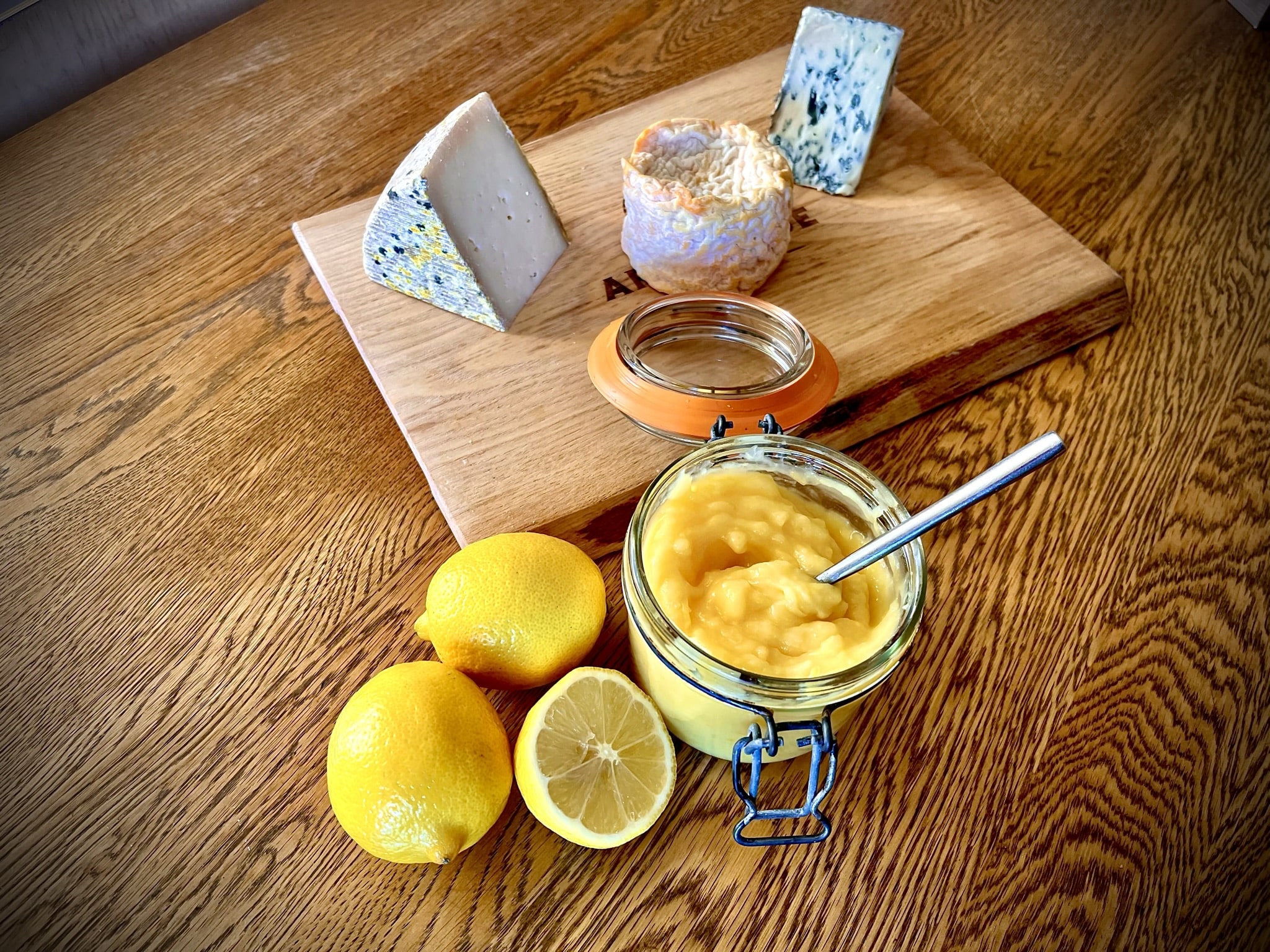Lemon cheese

Some cheeses need to be the star of their own show and this can be very true of washed-rind cheeses. You could bake them whole in the oven, or layer the cheese over thinly sliced roast potatoes with garlic and rosemary – like the classic French dish tartiflette. Because of their bold and complex flavour profiles, these styles of cheese are often best enjoyed as they are. However, adding an equally punchy condiment to cut through the funk of the cheese can work really well – and this lemon cheese preserve is a perfect pairing.
It isn’t quite clear what the difference is between lemon cheese or lemon curd, both of them are made with very similar ingredients. However some people think the name ‘cheese’ is to do with how the recipe was originally produced in the 19th century. The mixture was allowed to drain in a cloth, in a very similar way to how cheese is made.
I add a few pinches of good quality salt to this recipe (I used smoked salt for this batch) as I like the subtle contrast of salt against the sweet, but you can leave this out if preferred.
This lemon cheese can be enjoyed with a variety of different cheeses – a salty blue, creamy goat or even a hard cheese like a tangy Cheddar or Lancashire. It’s also great spread on toast or in desserts.
Lemon cheese
Ingredients
- 3 good quality lemons, zest and juice
- 100 g caster sugar
- 75 g butter, at room temperature
- 2 eggs, beaten
- 1 tsp salt (optional)
Instructions
- Juice and zest the lemons and add to a heatproof bowl with the sugar and butter. Nestle the bowl in a small saucepan of simmering water over a medium heat. It is important to make sure the water does not touch the bottom of the bowl as this could result in a split mixture. Stir the mixture with a whisk until the butter is melted and everything is combined.
- Beat the eggs and gradually add them to the mixture in the bowl, whisking constantly to make sure the mixture doesn’t scramble. Stir for about 10 minutes, or until the mixture has thickened to the consistency of custard. You really have to trust the processes at this stage. I was staring at this thin liquid in the bowl for what felt like an eternity, worried that it would never thicken. But gradually it starts to get to the consistency you want.
- Remove the bowl from the heat and keep whisking for about another minute. Add the salt, if using, and allow to cool slightly. Pour the mixture into sterilised jars. It will keep in the fridge for about two weeks.
